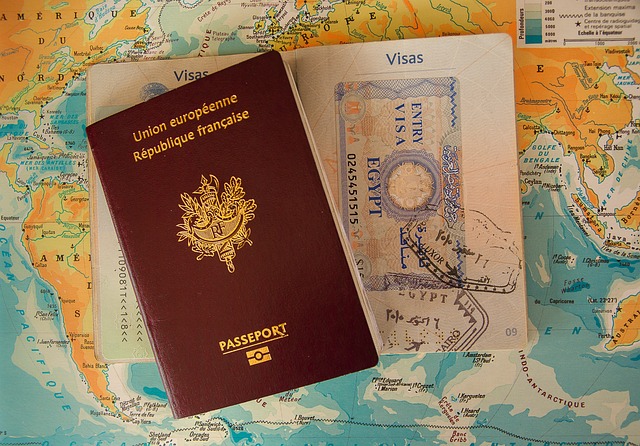Integration Courses for New Residents

Moving to a new country is an exciting but challenging experience. Integration courses are designed to help new residents adapt to their new environment, learn the local language, and understand the cultural and social norms of their host country. These courses are often a crucial step in ensuring a smooth transition and successful integration into the new society. This guide provides an overview of what integration courses typically involve, their benefits, and how to access them.
1. What Are Integration Courses?
1.1. Definition
Integration courses are structured programs aimed at helping new residents, including immigrants and refugees, adapt to their new country. These courses typically cover language training, cultural orientation, and practical information about living in the host country.
1.2. Objectives
- Language Proficiency: Help participants achieve a level of language proficiency that enables them to communicate effectively in daily life and the workplace.
- Cultural Understanding: Provide insights into the cultural, social, and legal norms of the host country.
- Civic Education: Educate participants about the political system, rights, and responsibilities of citizens and residents.
- Social Integration: Facilitate social connections and community involvement.
2. Components of Integration Courses
2.1. Language Courses
Language training is a core component of integration courses.
- Levels: Courses are often available at various proficiency levels, from beginner to advanced.
- Focus: Emphasis is placed on practical language skills needed for everyday situations, such as shopping, healthcare, and employment.
- Certification: Participants may receive a certificate upon completion, which can be useful for job applications and further education.
2.2. Orientation Courses
Orientation courses provide essential information about the host country.
- Cultural Norms: Understanding local customs, traditions, and social etiquette.
- Legal System: Overview of the legal system, including rights and responsibilities.
- Healthcare and Education: Information on accessing healthcare services and the education system.
- Employment: Guidance on job search strategies, workplace culture, and vocational training opportunities.
2.3. Civic Education
Civic education helps participants understand the political and social structures of the host country.
- Political System: Overview of the government, political parties, and electoral process.
- Rights and Responsibilities: Information on civil rights, freedoms, and obligations.
- Community Involvement: Encouragement to participate in community activities and volunteer work.
3. Benefits of Integration Courses
3.1. Improved Language Skills
Proficiency in the local language is crucial for effective communication and integration.
3.2. Better Job Prospects
Language skills and cultural knowledge can enhance employability and career advancement.
3.3. Social Connections
Integration courses provide opportunities to meet other newcomers and build a social network.
3.4. Cultural Competence
Understanding cultural norms and values helps prevent misunderstandings and fosters mutual respect.
3.5. Legal and Practical Knowledge
Knowledge of the legal system and practical information about daily life can ease the transition and reduce stress.
4. How to Access Integration Courses
4.1. Government Programs
Many countries offer government-funded integration courses.
- Eligibility: Check eligibility criteria, which may include residency status and language proficiency.
- Application Process: Apply through the relevant government agency or immigration office.
- Cost: Some courses are free or subsidized, while others may require a fee.
4.2. Non-Governmental Organizations (NGOs)
NGOs and community organizations often provide integration courses.
- Services: Language classes, cultural orientation, and social support.
- Access: Contact local NGOs or community centers for information on available programs.
4.3. Educational Institutions
Language schools and universities may offer integration courses.
- Programs: Intensive language courses, cultural workshops, and civic education.
- Enrollment: Check admission requirements and enrollment procedures.
4.4. Online Courses
Online platforms offer flexibility for those who cannot attend in-person classes.
- Options: Language learning apps, online courses, and webinars.
- Resources: Utilize online resources for self-paced learning and cultural orientation.
5. Country-Specific Examples
5.1. Germany
- Program: Integration Course (Integrationskurs)
- Components: 600 hours of language training and 100 hours of orientation.
- Provider: Federal Office for Migration and Refugees (BAMF)
- Cost: Subsidized, with a nominal fee per module.
5.2. Canada
- Program: Language Instruction for Newcomers to Canada (LINC)
- Components: Language training and settlement services.
- Provider: Government-funded language schools.
- Cost: Free for eligible participants.
5.3. United States
- Program: English as a Second Language (ESL) and Citizenship Classes
- Components: Language training and civic education.
- Provider: Community colleges, NGOs, and adult education centers.
- Cost: Varies; some programs are free or low-cost.
5.4. Australia
- Program: Adult Migrant English Program (AMEP)
- Components: Language training and settlement information.
- Provider: Government-funded language schools.
- Cost: Free for eligible migrants and humanitarian entrants.
6. Tips for Success in Integration Courses
6.1. Be Proactive
Take the initiative to enroll in courses and actively participate in classes.
6.2. Practice Regularly
Practice the language and apply cultural knowledge in daily life.
6.3. Seek Support
Utilize available resources, such as tutors, language partners, and community groups.
6.4. Stay Motivated
Set personal goals and track your progress to stay motivated.
6.5. Engage with the Community
Participate in community events and activities to practice language skills and build social connections.




